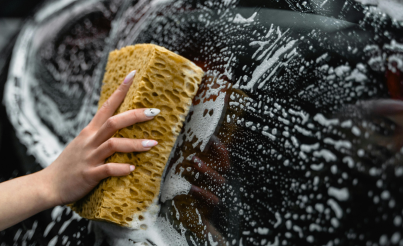Assistance systems is a widely used term that most people understand as both safety and driver assistance systems. In addition to simple things like seat belts and crumple zones, the systems also include technical and electronic systems. As technology advances, safety systems are getting better and better. It is thus important that car manufacturers continue to drive developments forward to ensure the safety and comfort of all passengers is maximised.
Safety systems: Important lifesavers on the road
Modern cars are equipped with a wide range of safety systems designed to prevent accidents or reduce the severity of accidents. These systems include classic safety features such as airbags and seatbelts, which can save lives in critical situations. They are complemented by technologies such as Anti-lock Braking Systems (ABS), which prevent the wheels from locking during braking, and Electronic Stability Programmes (ESP), which increase driving stability. Other key safety systems include:
Automatic Emergency Braking Systems: Detect collisions and automatically brake to avoid or mitigate collisions.
Traction control (ASR): Prevents wheels from spinning during acceleration.
Brake Assist: Automatically increases brake pressure during an emergency stop to reduce stopping distance.
Driver fatigue warning system: Detects signs of driver fatigue and recommends having a break.
Driving assistance systems and the road to autonomous driving
Driver assistance systems complement safety systems by making driving safer and more comfortable. Today, most systems use electronic technologies to assist the driver in various situations. Newer systems are already the first steps on the road to autonomous driving. These systems can be divided into several categories:
Information systems: Features such as head-up displays, audible warnings and speedometer symbols keep you informed of traffic conditions.
'Intervention only' systems: These systems continuously monitor driving behaviour and intervene only when necessary. They include safety-related systems such as the Lane Departure Warning system, which continuously monitors your driving and keeps you in your lane. They also include less safety-related systems such as lane change assist and hill descent and acceleration assist.
Automated systems: Again, technologies such as lane departure warning and emergency braking are safety related, while high beam assist and adaptive cruise control are more comfort related.
The risks
Despite all the benefits, there are also risks attached to these systems. It is dangerous to rely 100% on assistance systems as they are not always accurate and can, in the worst case, also fail. Such systems can furthermore cause distraction. For example, when driver input is required, such as to adjust speed and distance settings. When a warning is given, the driver should not be overly distracted. So although they are good complement features, it is not advisable to rely on them alone.
Mandatory equipment in cars from 2024
In order to significantly reduce the number of deaths and serious injuries on the roads, car manufacturers will have to install a number of safety assistants in their vehicles. A new EU regulation will make the following assistance systems mandatory from 7 July 2024:
- Adaptive cruise control
Black Box
Intelligent Speed Alert (ISA)
Fatigue warning systems
Emergency braking assistants
Reversing assistants
Lane departure warning systems
Each vehicle must also be fitted with a so-called standardised interface to which an unspecified control device can be connected. This device is intended for the installation of an alcohol sensitive immobiliser.
The future of driver assistance systems
With the rapid advancement of vehicle technology, driver assistance systems are constantly evolving. In addition to established systems such as Adaptive Cruise Control and Lane Departure Warning, the following more advanced technologies are becoming increasingly sophisticated:
V2X technology & connectivity: Modern vehicles are increasingly networked and can exchange information with the infrastructure (Vehicle-to-Infrastructure, V2I) and with other vehicles (Vehicle-to-Vehicle, V2V). This means that traffic lights can be better controlled or warnings of dangerous situations can be transmitted faster and more effectively.
Artificial intelligence (AI) in vehicle control: Among other things, AI technologies make it possible to better predict other road users and react proactively. As a future technology, it is also a fundamental building block in the development of autonomous driving.
Your car from Carvolution
Would you like to drive a car that is already equipped with numerous safety and driver assistance systems? Then you'll find your next car at Carvolution with the All-in-One car subscription. Choose from more than 50 models from different brands, whether you want a small car, an SUV or an electric car. So you'll always get to your destination safely.
SUPER SALE
Benefit from the super price of the Seat Ibiza Style from just CHF 216.- per month and get an additional 2'000 kilometres for free. Request a non-binding offer now!










